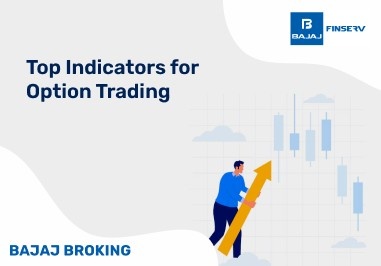What is an Intangible Asset?
Intangible assets do not have a physical form. So, you cannot touch or look at them. However, they can provide a lot of value to a business. Brand names are a good example of an intangible asset. Let us take the case of "Nike." Several consumers buy a pair of shoes or a t-shirt just because they are from Nike. They associate Nike with fitness and quality. Hence, the brand name "Nike" has a lot of value.
Similarly, pharma companies have intangible assets in the form of patents when they invent a new drug. Such patents prevent other companies from manufacturing the same drug. That said, before getting a patent for a drug, pharma companies have to invest a lot of money and effort in their research and development (R&D) activities. So, getting an intangible asset of value is no mean feat.
Consumers are increasingly focusing on brands while buying products and services. For example, Amazon and Flipkart are established brands in the e-commerce space. Airbnb is an established brand in the short-term accommodation market. As a result, intangible assets are becoming extremely important in valuing a business. Having learnt what an intangible asset is, let us move to other aspects.
Additional Read: What is Face Value in Share Markets?
The Value of Intangible Assets in Modern Investing
Intangible assets have become extremely important in modern-day business. This is because several new business models have emerged in the last few years, which have helped companies earn significant profits thanks to intangible assets.
Consider the case of video streaming companies like Netflix and Hotstar. The marketing teams of these companies have to spend a lot of money to acquire subscribers. When the subscribers stay with Netflix or Hotstar for a long time, they make money.
However, when a subscriber is acquired, the expenses incurred in getting him on board are recorded as costs, but the future revenue expected from him is not recorded anywhere.
So, if an investor were to show interest in buying Netflix or Hotstar, these companies would have to calculate the lifetime value of their subscribers because such value is not shown in their financial statements based on the prevailing rules of accounting.
Meanwhile, several technology companies own patents these days, which provide tremendous value to their business. For example, Alphabet Inc. whose search algorithm powers Google and YouTube owns thousands of patents, which give a boost to the value of its business.
Key Types of Intangible Assets
The most important types of intangible assets are explained below:
a) Goodwill: When a company acquires a business and pays for factors like brand value and customer loyalty by paying a premium, that premium is called goodwill. Goodwill is the difference between the amount paid to acquire a company and the value of its tangible assets.
b) Brand equity: When consumers are willing to pay a premium for the products or services of a company because they trust its brand, it is called brand equity. In the example we shared above, Nike enjoys immense brand equity in its market.
c) Patents: When a company invents a new product, it files for a patent. Such a patent offers it protection against other companies using its technology.
d) Copyrights: When an author writes a book or a lyricist writes music, they need protection so that others do not copy their work to make money. Hence, their work is prevented from getting copied with the help of copyrights.
e) Trademarks: When a company designs a logo that customers identify with, it is called a trademark. Logos of Nike, Adidas, Puma, BMW, Mercedes, etc. are examples of trademarks.
The Impact of Intangible Assets on Company Valuation
Intangible assets can have a favourable impact on the valuation of a company. However, a company needs to identify such assets well. As intangible assets cannot be seen or touched, it is difficult to value them.
As it is difficult to value them, it is also tough to make a buyer pay for them. Hence, utmost care must be taken while identifying and valuing intangible assets. However, if an intangible asset is identified and valued well, a company can definitely command a premium for it while selling its business in the market.
Typically, small and medium businesses have a problem identifying their intangible assets. Suppose a dentist wants to sell his business. Over the years, he has built a strong reputation for his business. Besides, he is willing to part with his brand name while selling his business.
However, it is often difficult for a small business to convince others to pay for its intangible assets. In India, even big businesses have a tough time getting the right value for their intangible assets.
Challenges in Measuring the Value of Intangible Assets
Experts face several challenges in measuring the value of intangible assets. First, there is no standardised method for valuing such assets. Several approaches like the income method, the cost method, and the market method are used, but they need to be tweaked based on the intangible asset under consideration, which makes the process extremely subjective.
Second, at times, we need the data of similar assets being traded in the market to value an intangible asset. However, such data may or may not be available. Third, qualitative metrics are sometimes used to measure the value of intangible assets. Under this method, we take the opinion of an expert; however that can be subjective.
There is another challenge here. Many companies today have intangible assets thanks to technology. However, technology changes so fast that a seemingly great idea can become obsolete in a matter of days. Hence, there is a huge risk involved in valuing tech-related intangible assets.
Strategies for Investing in Companies with Strong Intangible Assets
Can a retail investor invest in companies with strong intangible assets? We think a retail investor can do so. Here’s how:
a) Check the brand value: You should check whether a company has a strong brand value in its industry. A strong brand name lends solidity to a company’s business. Hence, you should consider such companies for investment.
b) Examine the quality of leadership: Leadership quality is an intangible asset that can really drive a business. So, you should check this aspect, too before investing in a company. Check whether a company has visionary leaders and a strong management team.
c) Check whether the customers are loyal: When a company has loyal customers, it gives a huge boost to its business. Many companies have customer loyalty programs and subscription models that bring them significant revenues. Such companies can be good candidates for investment.
d) Research and development (R&D) activities: Often companies that focus a lot on R&D activities end up inventing a technology or product with a patent. Hence, you should analyse the R&D expenditure of a company, which is provided in the profit & loss account. You should also read the notes to financial statements, where companies often discuss whether their R&D expenses have resulted in an intangible asset.
Additional Read: What is GIFT Nifty?
Future Trends in Intangible Asset Valuation
While valuing intangible assets is challenging, a few trends have emerged that may change the way these assets are valued in the future.
a) AI can help value intangible assets: Artificial intelligence (AI) can help us analyse complex datasets to identify patterns, which can enable us to value intangible assets. Imagine AI being used to analyse conversations happening over social media to analyse public sentiment towards a product or service.
b) Brand metrics can be used to value brands: Traditional accounting and financial methods do not capture the value of a brand accurately. As a result, companies are beginning to use brand metrics, like brand sentiment analysis, customer engagement, and social media reach. For this end, companies analyse customer interactions on social media, track online reviews and gauge brand awareness online that provide them with insights about the emotional connect consumers have with their brands. Such methodologies can be used to value intangible assets in the future.
Conclusion
There is an increasing realisation that intangible assets bring considerable value to companies, particularly in the age of technology. That said, we still do not have standardised methods or data to capture their value correctly on a company’s balance sheet. But, AI can help us value these assets better than we ever did in the past.
Disclaimer: Investments in the securities market are subject to market risk, read all related documents carefully before investing.
This content is for educational purposes only. Securities quoted are exemplary and not recommendatory.
For All Disclaimers Click Here: https://bit.ly/3Tcsfuc














